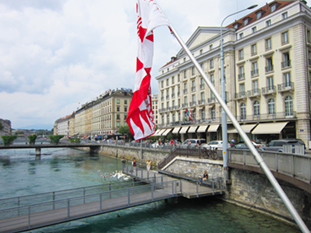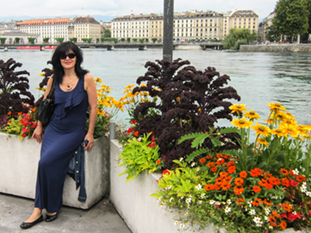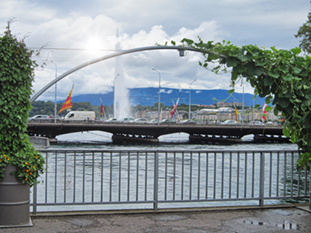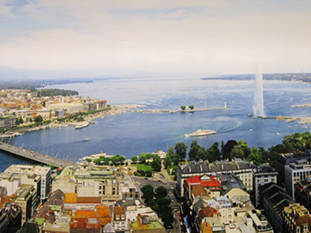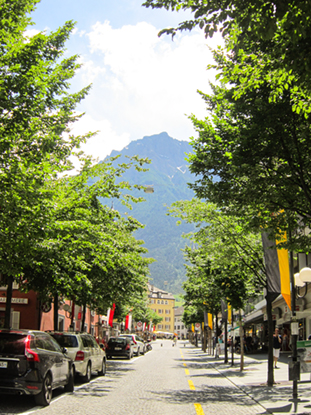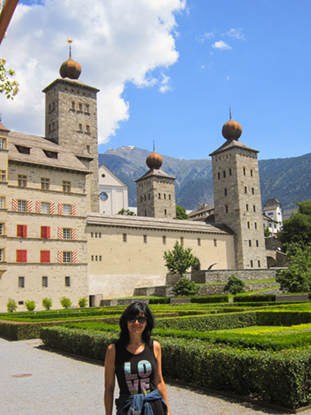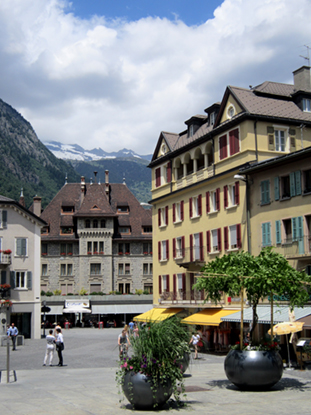
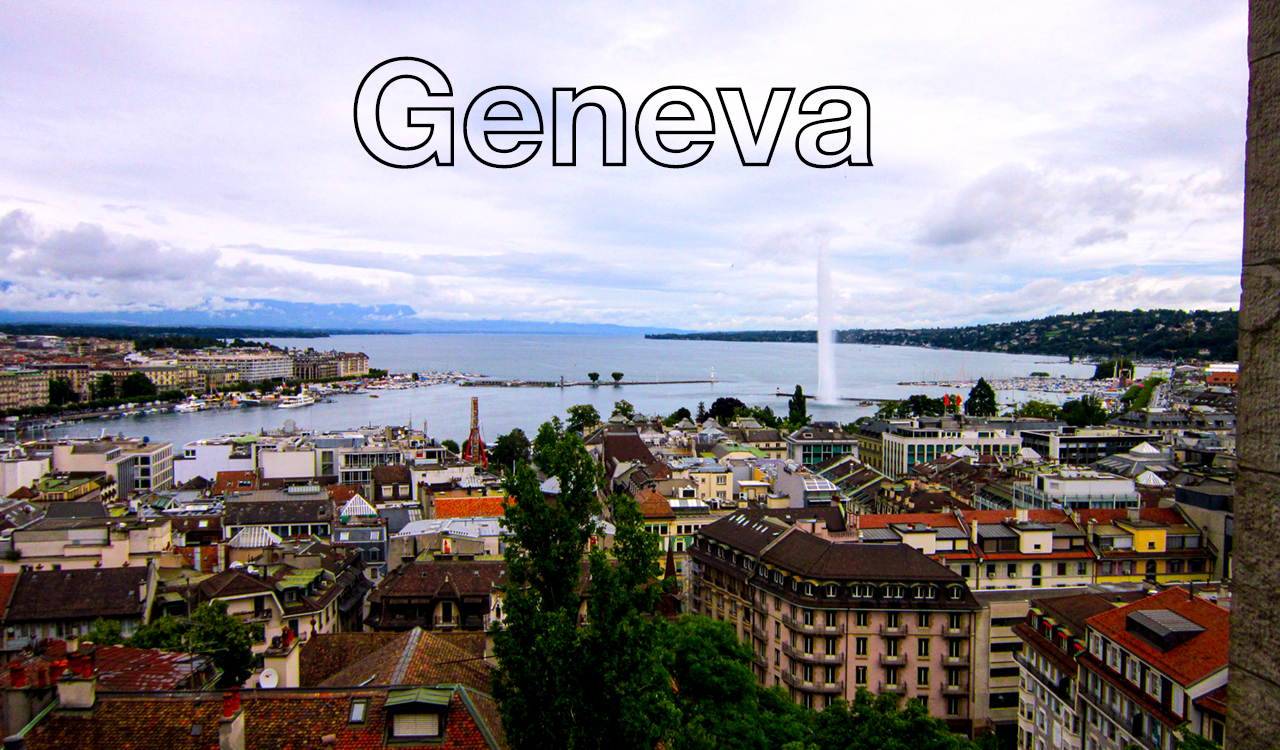
Helvetia - Switzerland
Helvetia, is nothing less than the female personification of the country.
Switzerland’s old Latin name Helvetia comes from the Helvetians, the first tribe settling in this central European region we have written historic records of. The latin name Helvetia is still being used on Swiss coins and stamps.
The mandatory CH car sticker to be found on all Swiss cars is the abbreviations based on Switzerland’s official Latin Name Confoederatio Helvetica.
Schweiz, Suisse, Svizzera, Svizra, Switzerland, Suiza, Svizrija etc. are just a few transcriptions in different languages of Schwyz, once the leading of the three founding member cantons (federal states) of the Swiss Confederation back in 1291. The French term canton should be translated as county if it stands for a political entity in France, but stands for a federal state in Switzerland. Today the Swiss often talk about the 26 cantons of Switzerland as if they had always existed, while in fact the term itself has been adopted in Switzerland as late as 1798.
Mont Blanc - the highest mountain peak in Europe
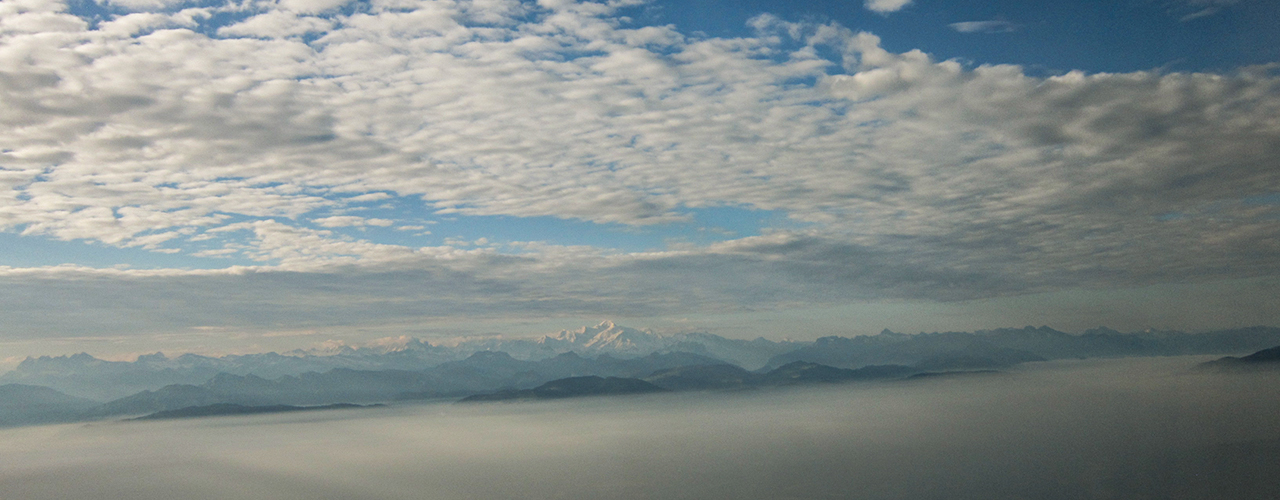
Mont Blanc is French for White Mountain. With a summit of 15,777ft (4,809m), the highest mountain in the Alps and in Europe. The mountain ranked 11th in the world in topographic prominence. The mountain is located in the French Alps, very close to the border with Italy.
This image is captured early in a morning from the flight, while landing onto Geneve airport. That morning a fog was covering the beautiful lake Geneva, a crescent−shaped lake shared between France and Switzerland and overlooked by the Alps.

Just to give a few information about this trip. Like every year we were going back home for a summer vacation. Although, we could take more direct route, we decided to fly to Geneva and spend a night there. Then, we took the train around the beautiful Geneva lake up to Domodossola (Italy), where our Swiss train experience ended. Thanks to the extremely efficient transportation system in Switzerland, that was a few hours trip but long enought to feel and experience all three major cantons cultures: French, German and Italian with the transfer point in Brig (German canton).
Of course, going throug the Simplon Tunnel that connects Brig, Switzerland and Domodossola, Italy, was a special experience. It takes you through the Alps, providing a shortcut under the Simplon Pass route and it’s straight except for short curves at either end.

Geneva, French speaking canton
Geneva is a city in Switzerland that lies at the southern tip of expansive Lac Léman (Lake Geneva). Surrounded by the Alps and Jura mountains, the city has views of dramatic Mont Blanc. Headquarters of Europe’s United Nations and the Red Cross, it’s a global hub for diplomacy and banking. French influence is widespread, from the language to gastronomy and bohemian districts like Carouge.
Start the day in Place du Bourg de Four
It is the main focal point of the Old town as well as one of the oldest crowning jewels of the city itself. Also, it is lively spot lined with laid back cafes and bistros where you can enjoy the world go by while you grab a coffee or bite to eat. Let’s walk towards it!
Between World Wars I and II, Geneva, as the center of world diplomacy, enjoyed a period of high prosperity and growth. This was followed by an abrupt decline, which reflected the fortunes of the League of Nations. Though its successor, the United Nations, settled in New York, Geneva was made the center of its European operations, and several UN affiliates, including the World Health Organization, established themselves in the city. Geneva has continued to be the site of important international diplomatic conferences. The revival of the city's fortunes is linked not only to the presence of the international organizations but also to the growing prosperity of all of Switzerland.
The canton of Geneva, which covers an area of only 109 square miles (282 sq km), is surrounded on all sides except the northeast by French territory. Almost two thirds of the canton's population lives in the city of Geneva. The rest inhabit small towns and large villages in the rural parts of the canton and along the lake's shores.
Geneva is a transportation center of great importance. Roads converge on the city, which commands the key crossing of the Rhône above Lyon. The opening of the Mont Blanc tunnel has made the road from Geneva to Aosta, Italy, the easiest and most-used crossing of the western Alpine system.
Must visit: Cathedrale de St−Pierre

Dominating a hill in the heart of Geneva’s Old Town, the Cathedrale de St−Pierre is well worth the climb to experience it. The cathedral was built between 1160 and 1252 as a Roman Catholic church, but became a Reformed Protestant Church and was made famous when French theologist and reformer John Calvin preached there in the mid−16th century.
Today, you can still see his wooden chair inside, as well as the beautifully ornate décor and stained−glass windows. Make your visit extra special by climbing the tower steps and taking in the views from the top.
Must see: Lake Geneva and Jet d−Eau Fountain
Literally, it means “water jet”. It is the huge Fountain on the Geneva Lake, in the city of Geneva, Switzerland. Jet d−Eau is one of the tallest fountain in the world. Originally, in 1886 they built the fountain to control and release the excess pressure of a hydraulic plant at La Coulouvrenière. Shortly it became remarkable symbol of the city and so it was amplified and relocated to the center of the Lake.

The Fountain presence gives the power to the place; every time you look on its majesty you are reminded that you are in the powerful and well organized country.
Soon after being finished, the fountain became the symbol of strength, ambition and vitality of Geneva and Switzerland. Its strong engines pump 500 liters of water per second to the height of 140 meters.
Here are a few more images from our own walking tour through Geneva....
Many people will say that in reality, the “Great outdoors” is what Switzerland is all about – the Alps, the lakes and snow.
To me, Switzerland is also about three C’s: Cheese, Chocolate and Cows. Swiss cows are beloved icon of this beautiful country and you will find them everywhere.
We went to one of grocery stores on our way back to the hotel, and this is what we found:
With no doubts - this was the real big size of Toblerone. For many people, Switzerland is synonymous with chocolate; and not just any chocolate, but rich, smooth chocolate that leaves you wanting more and more!
While cacao beans and other ingredients such as sugar can originate from outside Switzerland, the actual production of the chocolate must take place in Switzerland.
Switzerland is very proud of their chocolate history and continue to innovate and find new ways to wow our taste. Also, Swiss people consume the most chocolate per capita of any country worldwide - 19.8 lbs. So, Switzerland is among the largest chocolate exporters in the world with very strong domestic market.
Passing through German speaking canton
It was a time to leave Geneva heading towards Milan, Italy. The Swiss train is really amazing experience in many ways:
♦ It’s always right on time
♦ It’s very clean and has comfortable seats
♦ Every stop is clearly announced in the local canton and English languages, by a voice as well as on monitors inside the train
♦ That way, it’s very easy to determing to which canton each place belongs
♦ The lake and Alps landscape with small cities along the route, are so charming and vivid, imposible to describe.
Anyway, we had to switch the train in Brig with a few hours layover, which was just enough to take a short break and stroll throughout that small German language speaking city in Alps.
Brig sits at the foot of the Simplon Pass, which leads to the Italian border. It is a stop on the Glacier Express railway and is known for its thermal baths, St. Sebastian Chapel and 17th century Stockalper Castle. The castle was built by the merchant who developed the pass into a trade route. The Aletsch Glacier and Simplon ski regions are nearby.
From Brik to Italy through Simplon Tunnel
The Simplon Pass (French: Col du Simplon; German: Simplonpass; Italian: Passo del Sempione) (2,005 m or 6,578 ft) is a high mountain pass between the Pennine Alps and the Lepontine Alps in Switzerland. ... These include Wasenhorn, Hubschhorn, Breithorn (Simplon), and Monte Leone.
The average journey time by train between Brig and Domodossola is 31 minutes, with around 13 trains per day.
The first tunnel to be openeed was 19,803 m (64,970 ft) long; the second was 19,824 m (65,039 ft) long, making it the longest railway tunnel in the world for most of the twentieth century, from 1906 until 1982, when the Daishimizu Tunnel opened.
As the most of this journey was in the dark tunnel, we have no pictures to share. To me, being in tunnels is not a fun, especially this one. I felt like locked in a moving object called train under this huge mountain, and the original exitment very quickly gets replaced with an intense expectation to see the end of darkness. And finally, freedom and relief once you see again beautiful sky and landscape above and around you. Italian immigration officers are passing through the train and sporadically checking travelers documentation. That was the only sign of crossing the Swiss and Italy border line. This Swiss train last stop is Domodossola - northern Italy.

As you can see down below, the Italian train from here to Milan isn’t as nice as one through Switzerland where everything is perfect. However, this is Italy with it’s special charm we all love. Enjoy a few more north Italy memories from this journey where nature and small cities surrounded by lakes are really beautiful.

That was all from the trip through Switzerland. Thank you for watching!
